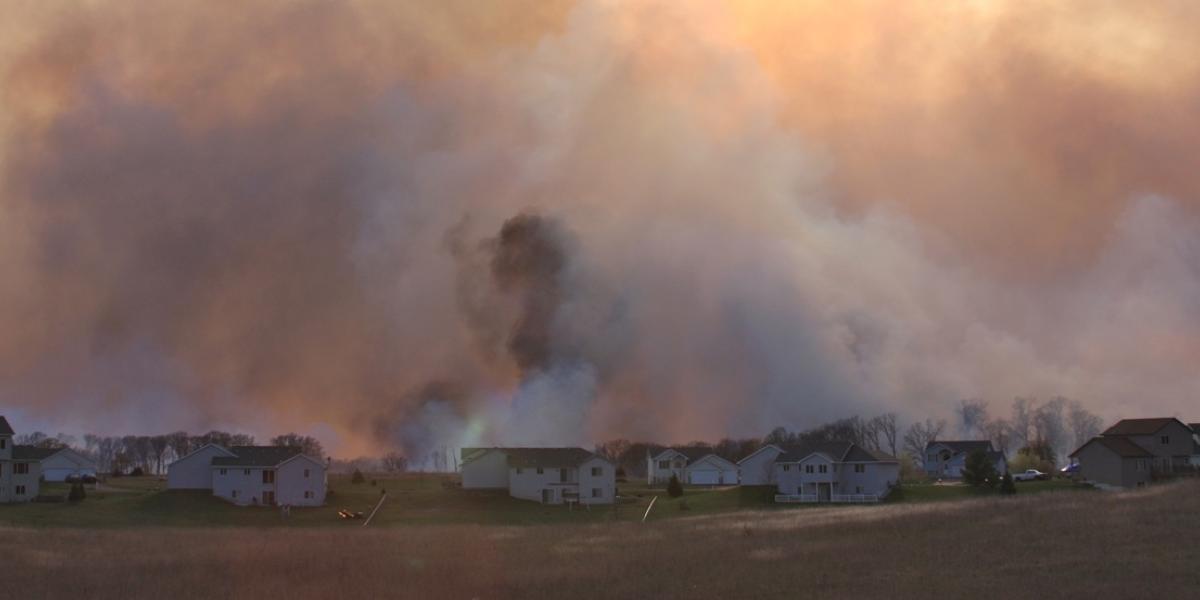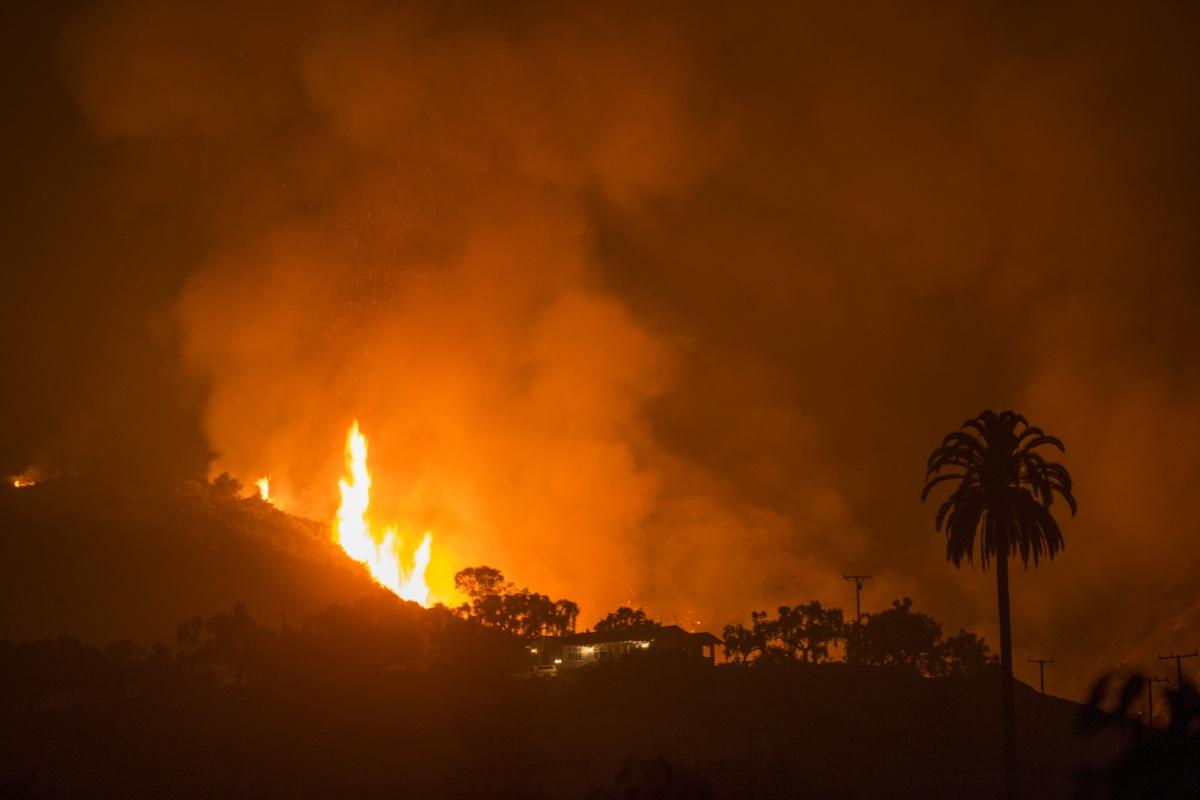
“The mountains are calling, and I must go.” – John Muir
Because it can be easy in today’s world to feel isolated from nature, many people are beckoned by the solace of wild places and seek ways to reestablish their connection with the natural world. This longing is motivating more and more people to move to undeveloped areas and stake a claim to their own open space.
This trend is evident in California, where, as of 2010, there were 4.46 million homes in the wildland-urban interface (WUI)—areas where development occurs in close proximity to wildland vegetation. This growth reflects a 34% increase from 1990, and the number of homes in the WUI is only projected to increase in the coming years.

Thomas Fire. Source: US Forest Service.
Although residents of the WUI enjoy benefits such as greater recreational opportunities and improved health and wellbeing, there are also a number of costs associated with their choice to develop and live in these areas. One such cost is heightened wildfire risk. When more people live and recreate in and around wildlands, the chance of human-induced wildfire increases. And whether started by humans or ignited naturally, all residents of the WUI must live with the threat that any wildfire poses to their own safety and property.
State and local governments in California address the problem of wildfire with fire prevention and suppression, stringent building and fire codes, and land-use planning. Effective as these measures may be, the way in which the programmatic costs are shared among California residents can affect the incentives people face when making decisions about living in the WUI. If homeowners and builders in the WUI bear the entire cost of their increased exposure to wildfire risk, they might be less willing to live or build there. But if the costs of wildfire risk are shared by people living outside the WUI, this dilutes the financial burden born by WUI residents and builders, incentivizing them to seek out these relatively risky areas.
In California, many of the costs associated with wildfire risk reduction are shared by all Californians, no matter if they live inside or outside of the WUI. For example, the California Department of Forestry and Fire Protection (CAL FIRE), which is responsible for fire prevention and suppression across roughly 31 million acres of privately-owned wildlands, receives 85-90% of its funding from the State’s General Funds and Reimbursements. Though CAL FIRE responds to other emergencies, such as automobile accidents, the majority of its budget is earmarked for wildfire prevention and suppression. This means that individuals who don’t directly benefit from CAL FIRE’s services are effectively subsidizing those that do. While the State’s General Fund goes toward a variety of other services that benefit particular subsets of the population (e.g., K-12 education), those services are typically justified on the grounds that they create substantial public benefits. The public benefit of WUI development is unclear.

Ferguson Fire. Source: US Forest Service.
The California Fair Access to Insurance Requirement (FAIR) Plan is another example of a policy that may skew incentives to develop in the WUI. The California FAIR Plan -- an insurer of last resort -- provides homeowners with fire insurance in the event that the private market deems their property too risky to insure. Without the California FAIR Plan, the lack of available, or excessively expensive, insurance would signal the significant risk of building in the WUI. That signal, however, is dampened by the California FAIR Plan.
California does have a few policies that discourage WUI development by directing costs to those who live and build there. Until the end of the 2018 fiscal year, CAL FIRE levies a Fire Prevention Fee (FPF) of $153.33/year on buildings that lie within their fire prevention and suppression jurisdiction. A similar fee is levied in a special Wildland Fire Suppression Assessment District in the City of Santa Barbara. All homes within the District’s boundaries pay, on average, $65/year for fire prevention services, such as defensible space evaluations, vegetation road clearance, an annual chipping program, and overall vegetation management. Finally, people building new homes in the California WUI also face higher building costs because they must comply with stringent building and fire codes designed to make structures more resilient to fires.
As wildfire events become larger and more frequent, it is important to consider how the distribution of costs for mitigation programs might be increasing California’s fire risk. Though our quest to return to wild areas might be filling a fundamental human need, we must ask ourselves whether the benefits of this quest are worth the financial and environmental costs. And if so, who should bear the burden?




